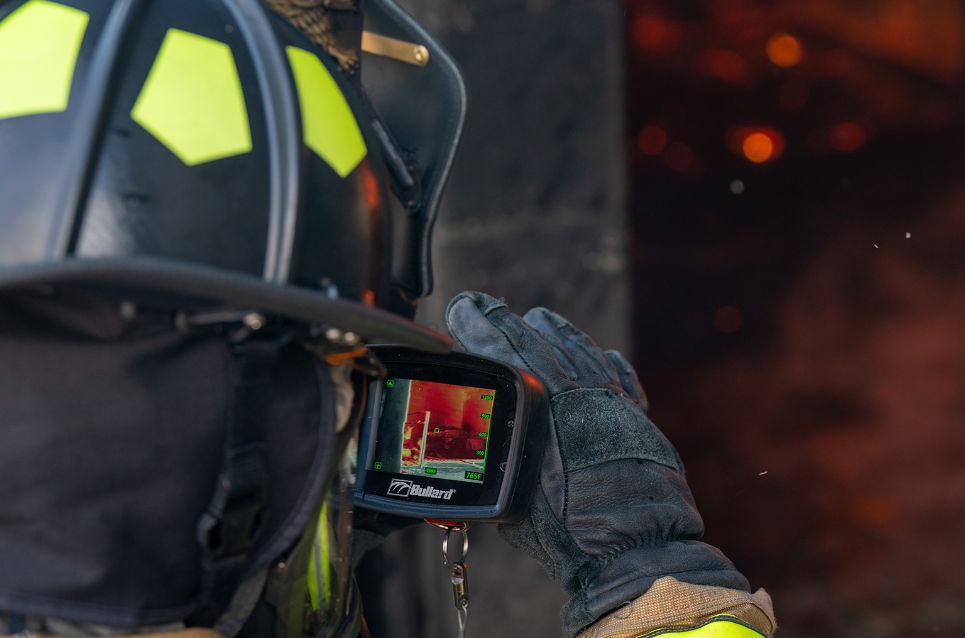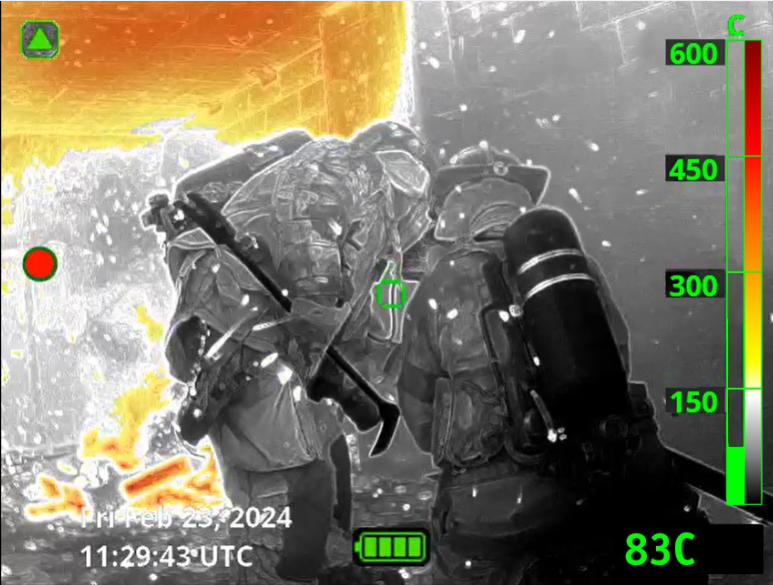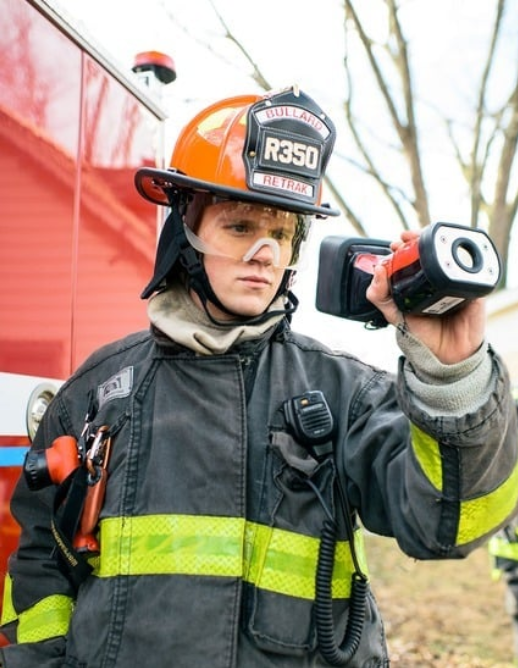The display is the critical interface between a thermal imager and its user. It translates infrared data into actionable visuals, making display quality a key factor in firefighter safety and operational success. A high-quality display helps ensure that firefighters can interpret thermal data quickly and accurately, even in extreme and dynamic conditions. This guide provides an in-depth look at display features, practical testing methods, and how they align with real-world firefighting needs.
Key Aspects of Display Quality
1. Brightness and Contrast
- Why It’s Important: Brightness and contrast are essential for clear visibility in various lighting conditions, from bright daylight to smoke-filled environments. Brightness helps ensure clarity, while high contrast emphasizes critical details like hotspots and subtle temperature gradients.
2. Viewing Angles and IPS Technology
- What It Does: Displays with in-plane switching (IPS) technology maintain image clarity and color accuracy even when viewed at extreme angles.
- Applications: In dynamic fireground scenarios, firefighters often view screens from the side or share the display with team members. Wide viewing angles help ensure all critical details remain visible regardless of perspective, improving team coordination.
3. Screen Size and Resolution
- Why It Matters: Larger screens provide more detail, making it easier to interpret complex thermal images in high-pressure situations. Resolution should match the thermal sensor’s capabilities, with 320 x 480 or 64 0x 480 pixels recommended for precise image clarity. See why a higher resolution matters here.
- Real-World Impact: High-resolution displays prevent distortion or pixelation, helping firefighters to identify subtle heat signatures crucial for detecting victims or flow paths.
4. Durability and Glare Resistance
- Durability Features: Displays must withstand the physical demands of firefighting, including impacts, drops, and exposure to extreme temperatures.
- Anti-Glare Technology: Displays with anti-glare coating reduce reflections in bright conditions, such as outdoor fires during daylight, providing consistent visibility.
Testing Display Quality in Real-World Scenarios
When evaluating thermal imagers, practical testing under firefighting conditions is essential to assess display quality.
1. Glove Compatibility
- Verify that the display remains readable while wearing gloves and full PPE.
- Test the responsiveness of controls and helps ensure fonts and icons are large enough for quick interpretation.
2. Visibility in Extreme Conditions
- Smoke-Filled Environments: Use a live fire environment to evaluate how well the display performs in reduced visibility.
- Bright Sunlight: Test displays outdoors in direct sunlight to assess brightness and glare resistance.
- Low-Light Conditions: Verify the display remains clear and readable in near-total darkness, such as basement fires or night operations.
3. Team Collaboration
- Check how the display performs when viewed by multiple team members from various angles. Wide viewing angles and clear visuals enhance shared decision-making during operations like structural assessments or coordinated rescues.
4. Environmental Durability
- Simulate real-world stress by exposing the display to heat, water spray, and drops from shoulder height. Verify that the screen remains functional and clear after each test. Understand if display covers are field replicable in the instance of scratches or scuffs.

Why Display Quality Impacts Performance
- Improved Situational Awareness
A clear and responsive display enables firefighters to detect critical details at a glance, leading to faster and more accurate decisions.
- Enhanced Team Coordination
Wide viewing angles and large, detailed screens allow multiple team members to share visual data, improving communication and efficiency.
- Operational Efficiency
Features like anti-glare coatings, adjustable brightness, and durable screens reduce visibility challenges, reducing uninterrupted operations.
“The IPS displays on these thermal imagers have been a game-changer for us. The wide viewing angles help our teams stay coordinated during high-pressure situations, and the clarity makes identifying hotspots much faster, which means we can control fires more effectively and help keep everyone safer.”
— A Battalion Chief from a suburban fire department
Conclusion
The quality of a thermal imager’s display is critical for safety and operational success. Brightness, contrast, viewing angles, resolution, and durability all play vital roles in providing more accurate and reliable thermal imaging.
By evaluating displays in real-world conditions and prioritizing features designed for firefighting, departments can equip their teams with tools that enhance performance and safety. For more information or to schedule a demonstration, visit www.bullard.com Give your team the clarity they need when it matters most.


